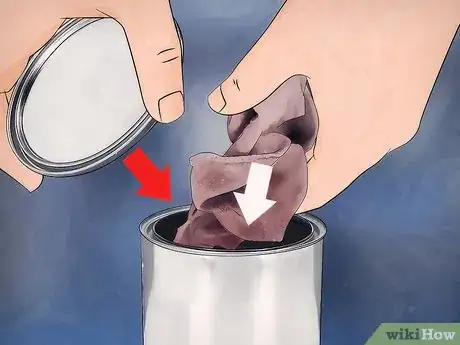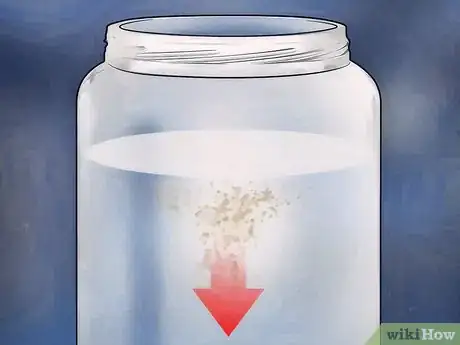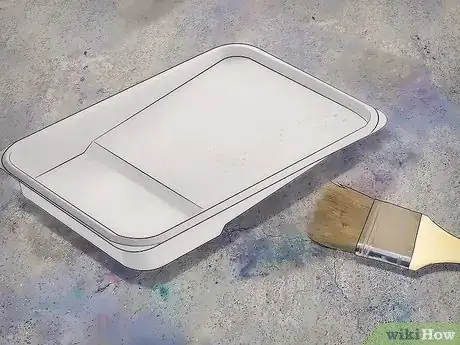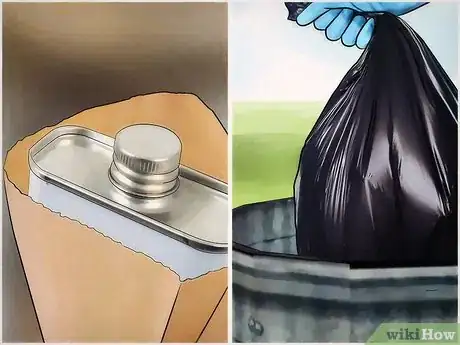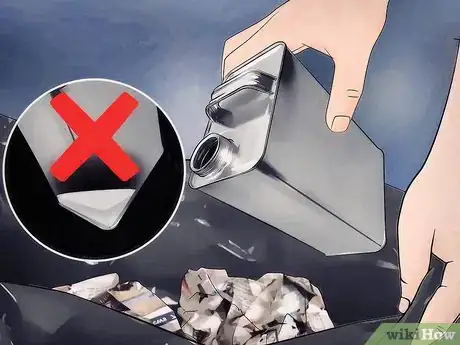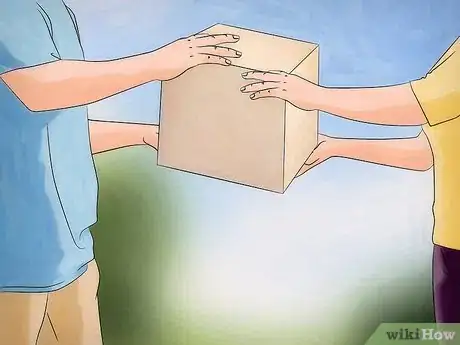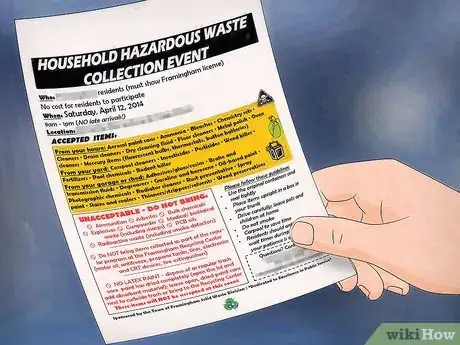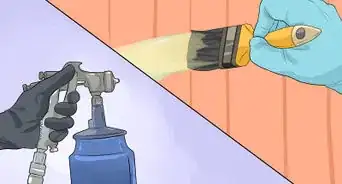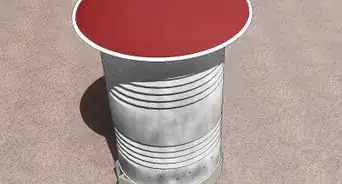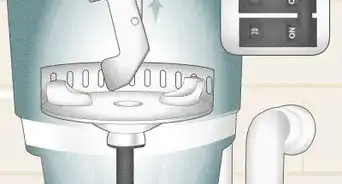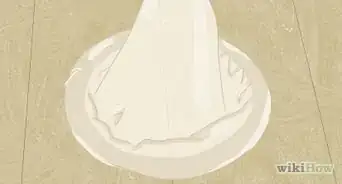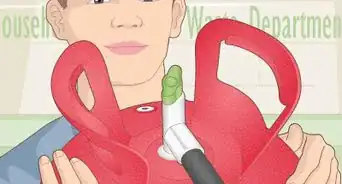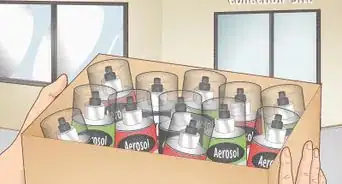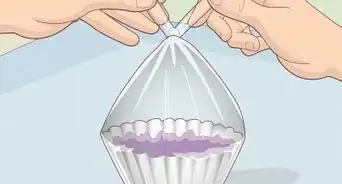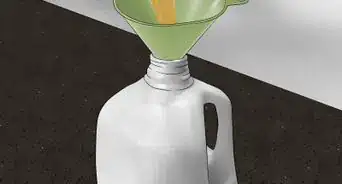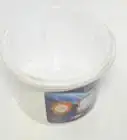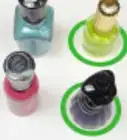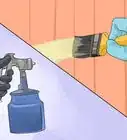This article was co-authored by wikiHow Staff. Our trained team of editors and researchers validate articles for accuracy and comprehensiveness. wikiHow's Content Management Team carefully monitors the work from our editorial staff to ensure that each article is backed by trusted research and meets our high quality standards.
There are 7 references cited in this article, which can be found at the bottom of the page.
wikiHow marks an article as reader-approved once it receives enough positive feedback. In this case, 92% of readers who voted found the article helpful, earning it our reader-approved status.
This article has been viewed 247,248 times.
Learn more...
Paint thinner and similar solvents can contaminate groundwater or cause a fire if thrown in the household trash. Most jurisdictions classify them as hazardous substances, and require residents to dispose of them safely and carefully to protect the environment and themselves.
Steps
Disposing of Used Paint Thinner
-
1Dispose of rags in a sealed metal container. Rags soaked in paint thinner may combust in air, causing a serious fire. Place them in a metal container with a tight lid, fill with water, and bring it to a hazardous waste collection site.
- If you do not have a watertight container, spread the rags out on a non-flammable surface in a ventilated area. Weigh them down with no bunching or overlap. Supervise them until they are dry. Seal in a fireproof container.
-
2Leave dirty paint thinner to separate. There's no need to throw out paint thinner after one use. After soaking tools or brushes, leave the paint thinner to sit in a sealed, labeled glass container. Over time, the paint and other contaminants will settle to the bottom. This can take anywhere from a couple days to several months depending on how dirty the paint thinner is.Advertisement
-
3
-
4Let the rest dry. Leave the container open and let dry in a well-ventilated area. Add cat litter, sawdust, or sand to speed up drying.[4] Keep this container out of the reach of pets and children, and away from heat, flame, and flammable materials.
- If there is more than 1 cup (240 mL) of material left, use the method below instead.
- Bring it straight to a hazardous waste facility instead if the solvent contains a halogenated chemical (anything with "fluor-," "chlor-," "brom-," or "iod-" in the name).[5] These chemicals are not commonly used in paint thinners, but can be found in related solvents such as paint strippers and degreasers.
-
5Wrap dry thinner and put in trash. Once the material is solid and completely dry, wrap the paint thinner in newspaper, then seal in a plastic bag. You can now throw it away in the household trash.
- Many waste collection services will accept this, but there's a chance yours requires you to bring this to a hazardous waste site. You can call yours to confirm.[6]
-
6Throw away empty paint thinner containers. You can use the regular household trash if there is less than one inch (2.5 cm) of residue inside the container, and it has dried completely.[7] Do not put them in the recycling.[8]
- If there is still liquid inside, or a large amount of dried residue, take the container to a hazardous waste collection site.
Disposing of Excess Paint Thinner
-
1Give the paint thinner away. The easiest way to get rid of unused paint thinner is to find someone who needs it. Offer it to a friend or neighbor, or donate it to a local organization that could use it for renovation projects.
-
2Take the paint thinner to a hazardous household waste collection facility. Many municipalities have permanent sites available for the drop-off of hazardous materials like paint and paint thinner. Search for facilities in your area by contacting your local government, or using an online search such as Earth911.com in the US, or gov.uk/hazardous-waste-disposal in the UK.
- Most hazardous waste facilities will accept pain thinner in a sealed metal or glass container. Contact your local facility if you have a large amount of waste to dispose of.
-
3Take the paint thinner to a hazardous household waste collection event. Many jurisdictions hold annual or semiannual events for the disposal of hazardous waste. These events can be found through your local government website. Many states in the United States have a Department of Environmental Protection (or a similar branch) that organizes these events.
Community Q&A
-
QuestionHow do I minimize potential static ignition?
 Community AnswerAvoid pouring paint thinner in an area with concentrated fumes, dust, or other flammable materials in the air. Before transferring large amounts of solvents (5 gallons / 19 liters+) between metal containers, connect them with a wire and bonding strap, and ground storage containers to a pipe or other grounded metal object.
Community AnswerAvoid pouring paint thinner in an area with concentrated fumes, dust, or other flammable materials in the air. Before transferring large amounts of solvents (5 gallons / 19 liters+) between metal containers, connect them with a wire and bonding strap, and ground storage containers to a pipe or other grounded metal object. -
QuestionA customer of mine spilled paint thinner on my cash register belt. My boss cleaned it up with paper towels and put the towel in the trash. Is this proper?
 Community AnswerThe wet towels could easily ignite and cause a fire, especially if they are bunched up and thrown in a small container. They should be kept in a sealed, fireproof container instead, and taken to a hazardous waste collection site. Keep people away from the conveyor belt area until the spill is completely dry. (If the area has poor ventilation, run a fan next to it.)
Community AnswerThe wet towels could easily ignite and cause a fire, especially if they are bunched up and thrown in a small container. They should be kept in a sealed, fireproof container instead, and taken to a hazardous waste collection site. Keep people away from the conveyor belt area until the spill is completely dry. (If the area has poor ventilation, run a fan next to it.) -
QuestionHow to dispose of lacquer thinner?
 Community AnswerYou can use the same methods to dispose of lacquer thinner. It is usually more caustic than paint thinner so avoid skin contact and follow safety instructions on the label.
Community AnswerYou can use the same methods to dispose of lacquer thinner. It is usually more caustic than paint thinner so avoid skin contact and follow safety instructions on the label.
Warnings
- Never pour paint thinner down a drain or dump it outside.⧼thumbs_response⧽
- Never store paint thinner in a food or beverage container where it might be mistaken for something edible.⧼thumbs_response⧽
- Keep the paint thinner away from pets or children if leaving it out to dry. Do not let cats in the same room, since it is difficult to keep them away from high places.⧼thumbs_response⧽
Things You'll Need
- Garden hose
- Paper
- Glass or plastic container
- Sawdust or cat litter
- Plastic bag
References
- ↑ http://www.dec.ny.gov/docs/materials_minerals_pdf/solvent.pdf
- ↑ http://www.rethinkrecycling.com/residents/materials-name/paint-thinners-and-solvents
- ↑ http://www.oregonmetro.gov/tools-living/healthy-home/common-hazardous-products/paint-thinners
- ↑ http://thehousingforum.com/how-to-dispose-of-paint-thinner/
- ↑ http://www.dep.state.fl.us/northeast/waste/HWdeterminations.htm
- ↑ http://thehousingforum.com/how-to-dispose-of-paint-thinner/
- ↑ https://www.law.cornell.edu/cfr/text/40/261.7
- ↑ http://www.rethinkrecycling.com/residents/materials-name/cans-and-bottles
About This Article
To dispose of used paint thinner, place any soaked rags in a sealed metal container filled with water so they don't combust and cause a fire. Then, put the used paint thinner in a sealed, glass container and leave it until it separates. Once the dirt has settled to the bottom, pour the clean paint thinner in a glass jar and leave the rest in a well-ventilated area to dry. After it's dry, wrap the container in newspaper, place it in a plastic bag, and toss it in the trash. If you want to get rid of clean paint thinner, take it to a local hazardous waste facility. To learn how to dispose of empty paint thinner containers, scroll down!
